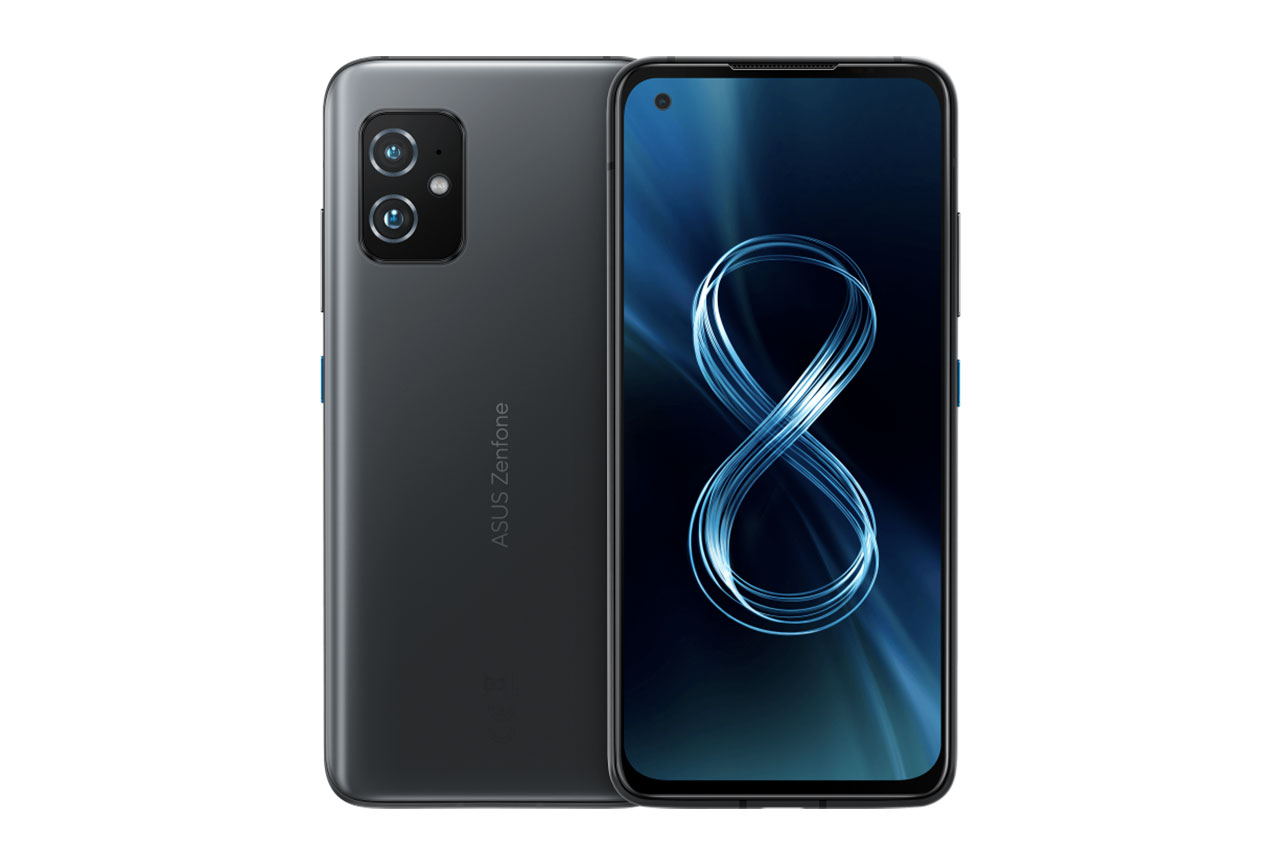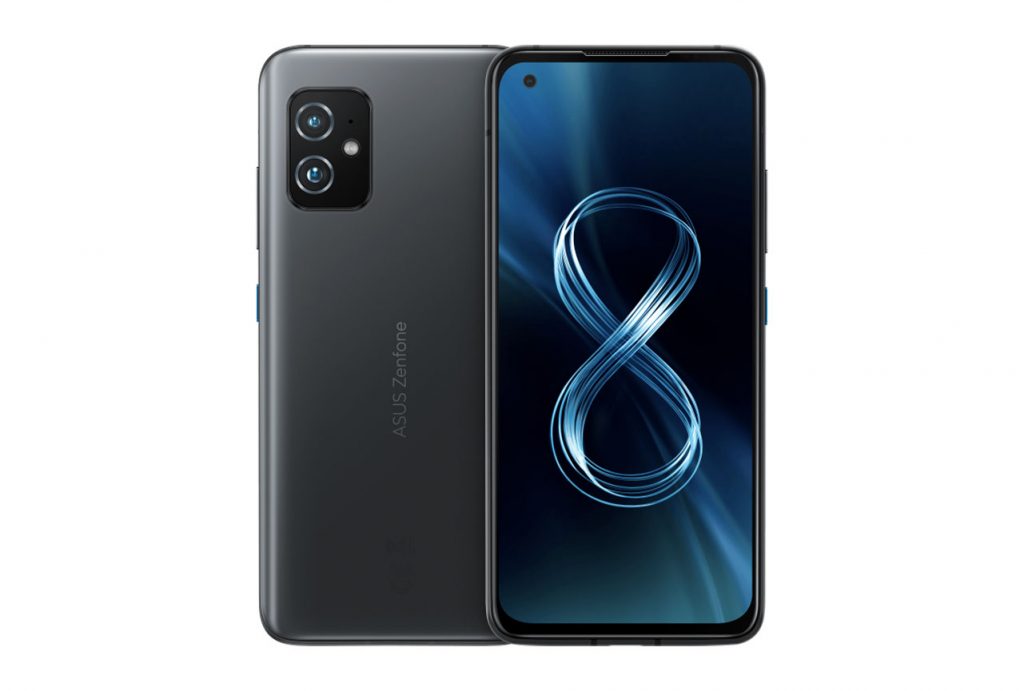The Asus Zenfone 8 made its appearance in May 2021. Packed with features, it belongs to our Premium ($600-$799) segment. Let’s take a look at some of its key battery test results.
Key specifications:
- Battery capacity: 4000 mAh
- 30W charger
- 5.9-inch, 1080 x 2400, 120 Hz OLED display
- Qualcomm Snapdragon 888 5G chipset
- Tested ROM / RAM combination: 128 GB + 8 GB
About DXOMARK Battery tests: For scoring and analysis in our smartphone battery reviews, DXOMARK engineers perform a variety of objective tests over a week-long period both indoors and outdoors. This article highlights the most important results of our testing. (See our introductory and how we test articles for more details about our smartphone Battery protocol.)
Test summary
Scoring
Sub-scores and attributes included in the calculations of the global score.

Asus Zenfone 8


Key performances
These key points are derived from the lab measurements during testing and do not figure into the overall score. The lab measurements, however, are used for the overall score.
 81st
81st
 17th
17th
Pros
- Good power management at night
- Charging time from 0% to 80% is acceptable in its segment
- Residual power drain kept under control
Cons
- No wireless charger
- Disappointing in music and video streaming
- Performance in on the go tests, especially for calling and camera
Despite having specs that are similar to its competitors in this review, the Asus Zenfone 8 lags a bit behind in most tested categories.
We compared the Asus Zenfone 8’s performance with two other devices in our Premium segment, the OnePlus 9 and the Samsung Galaxy S21 5G (Snapdragon); battery capacity, tested charger, display type, and resolution, and processor specifications for all three devices are shown in the table below.
| Asus Zenfone 8 | OnePlus 9 | Samsung Galaxy S21 5G (Snapdragon) | |
| Battery capacity | 4000 mAh | 4500 mAh | 4000 mAh |
| Charger
Wireless |
30W No |
65W
15W |
25W (not included) 15W |
| Display type | OLED | OLED | OLED |
| Display resolution | 1080 x 2400 | 10800 x 2400 | 1080 x 2400 |
| Chipset | Qualcomm Snapdragon 888 5G | Qualcomm Snapdragon 888 5G | Qualcomm Snapdragon 888 5G |
Autonomy (51)
How long a battery charge lasts depends not only on battery capacity but also on other aspects of the phone’s hardware and software. The DXOMARK Battery autonomy score is composed of three performance sub-scores: (1) Stationary, (2) On the go, and (3) Calibrated use cases. Each sub-score comprises the results of a comprehensive range of tests for measuring autonomy in all kinds of real-life scenarios.
The Asus Zenfone 8 comes in behind its rivals in all three of our autonomy test categories. Further, its battery gauge is not especially accurate, since when the battery gauge shows 20% power remaining, there is really only 17.9% left.
Battery Life (moderate)
 93rd
93rd
Battery Life (moderate)
 20th
20th

Stationary
Asus Zenfone 8
55
104
A robot housed in a Faraday cage performs a set of touch-based user actions during what we call our “typical usage scenario” (TUS) — making calls, video streaming, etc. — 4 hours of active use over the course of a 16-hour period, plus 8 hours of “sleep.” The robot repeats this set of actions every day until the device runs out of power.
The Asus Zenfone 8 lasted 53 hours 37 minutes, which is 3 to 4 hours less than its rivals, but still offers more than 2 days of autonomy. It manages night dischage well, losing only 2%, compared to the OnePlus 9’s loss of 2.33%.

On the go
Asus Zenfone 8
50
96
Using a smartphone on the go takes a toll on autonomy because of extra “hidden” demands, such as the continuous signaling associated with cellphone network selection, for example. DXOMARK Battery experts take the phone outside and perform a precisely defined set of activities while following the same three-hour travel itinerary for each device.
The Asus battery struggles in on the go tests, especially when calling and using its camera, though it performs almost as well as its rivals for social apps on the go.

Calibrated
Asus Zenfone 8
52
100
For this series of tests, the smartphone returns to the Faraday cage and our robots repeatedly perform actions linked to one specific use case (such as gaming, video streaming, etc.) at a time. Starting from an 80% charge, all devices are tested until they have expended at least 5% of their battery power.
Although the Zenfone 8 is well optimized with its screen off in idle mode, it does not fare well against the competition. All video test cases drain its battery quickly, though it manages to do nearly as well as the OnePlus and Samsung when gaming.
Charging (75)
The DXOMARK Battery charging score is composed of two sub-scores, Full charge and Quick boost. Full charge tests assess the reliability of the battery power gauge; measure how long it takes to charge a battery from zero to 80% capacity and from 80 to 100%; and measure how long and how much power the battery takes to go from an indicated 100% to an actual full charge. With the phone at different charge levels (20%, 40%, 60%, 80%), Quick boost tests measure the amount of charge the battery receives after being plugged in for 5 minutes.
Unsurprisingly, the OnePlus 9 with its 65W charger is far ahead of both the Asus and the Samsung in our charging tests.

Full charge
Asus Zenfone 8
76
121
It takes 1 hour 51 minutes to fully charge the Asus Zenfone 8 with its 30W charger, which is a bit slower than the Samsung Galaxy S21 5G (Snapdragon) with its 25W charger. The difference is that Asus decreases the charging power at around 75% capacity to conserve battery longevity, while the Samsung waits to slow charging until it gets to 87%. The OnePlus 9 takes only 33 minutes 32 seconds to achieve a full charge.
Charging Time 0-80%
 56th
56th
Charging Time 0-80%
 18th
18th

Quick boost
Asus Zenfone 8
72
111
The Asus Zenfone 8 provides an average of more than 3 hours of additional autonomy with a five-minute charge. This is better than the Samsung’s 2 hours 34 minutes, but the OnePlus 9 provides a whopping near-7 hours.
| Asus Zenfone 8 | OnePlus 9 | Samsung Galaxy S21 5G (Snapdragon) | ||
| Autonomy boost (hh:mm) | 20% | 3:19 | 8:26 | 2:38 |
| 40% | 3:17 | 5:59 | 2:45 | |
| 60% | 2:33 | 5:28 | 2:09 | |
| 80% | 1:27 | 4:02 | 1:57 | |
| Percentage boost | 20% | 9.9 % | 23 % | 7.4 % |
| 40% | 9.8 % | 16.3 % | 7.7 % | |
| 60% | 7.6 % | 14.9 % | 6 % | |
| 80% | 4.4 % | 11 % | 5.5 % | |
| Energy consumed | 20% | 1964 mWh | 4923 mWh | 1466 mWh |
| 40% | 1944 mWh | 3491 mWh | 1528 mWh | |
| 60% | 1512 mWh | 3188 mWh | 1195 mWh | |
| 80% | 864 mWh | 2354 mWh | 1088 mWh |
Efficiency (75)
The DXOMARK power efficiency score consists of two sub-scores, Charge up and Discharge rate, both of which combine data obtained during robot-based typical usage scenario testing, outdoor mobility testing, charging evaluation, and power measurements, and then take into consideration the device’s battery capacity.
Although the Zenfone 8 just edged out the OnePlus in discharge efficiency, it was quite a ways behind the Samsung, and both the OnePlus and Samsung did better than the Asus device in charge up efficiency.

Charge up
Asus Zenfone 8
75
105
The Asus Zenfone 8 comes in last among the three devices for charge up and charger efficiency; that said, its charger efficiency is not bad for its segment.

Discharge
Asus Zenfone 8
75
121
The Zenfone 8 achieves slightly better results than the OnePlus 9 in discharge efficiency, particularly in gaming and video playback. The Samsung is a better-optimized device than either the Asus or the OnePlus.
Conclusion
The Asus Zenfone 8 struggles to provide a good autonomy and charging experience, but does a decent job managing residual power drain and power consumption at night.

 English
English 中文
中文

DXOMARK invites our readership (you) to post comments on the articles on this website. Read more about our Comment Policy.